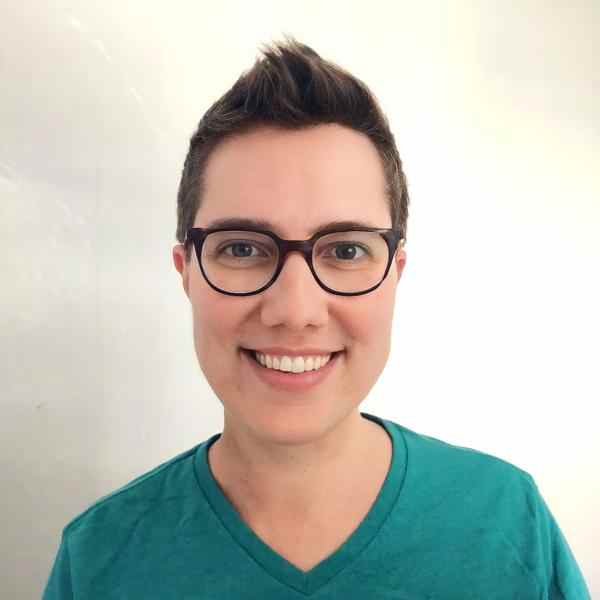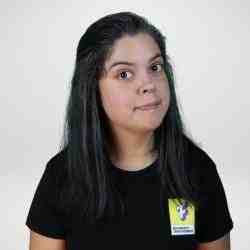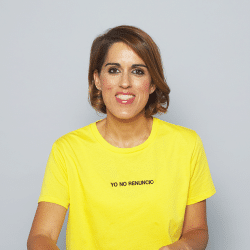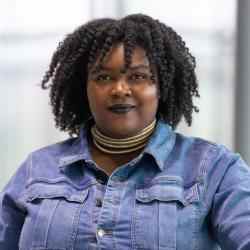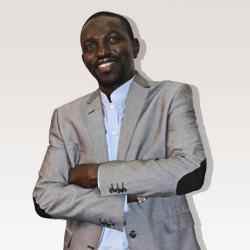Einführung
Against the backdrop of a growing youth mental wellbeing crisis, Elise is reinventing the support service ecosystem to expand and improve public health access for young people so they can live without shame or fear.
Die neue Idee
Despite spending an average of nine hours per day online, 80 percent of young people say they don’t have an online source that they trust with personal, important issues. Less than half of teenagers in the United States receive even basic information about critical topics including birth control and consent. Fewer still have any opportunity to talk with trusted adults about navigating romantic relationships or developing a sexual orientation or gender identity. Sex itself is the ultimate taboo topic – some adults fear that discussing sex with young people will encourage sexual activity, even though research shows it is the exact opposite. In this void, young people turn to sources with harmful misinformation and, as a result, experience abusive relationships, unwanted sexual activity, pregnancy scares, low self-worth, and so much more.
Recognizing that these topics are ignored by traditional mental health practices and programs, Elise’s non-profit Okayso directly addresses the unspoken, having conversations with young people that other adults in their lives are too uncomfortable or ill-equipped to discuss. Elise believes that it is these problems, left unaddressed, that lead to many of the larger mental health issues young people face down the line. Research shows that when young people receive comprehensive sexuality education, their mental health improves.
Almost every element of Elise’s approach is new, beginning with the when: Okayso is designed to support young people at any point in their journey, to answer questions that seem minor and those that are more urgent. This is a deliberate effort to reach millions of youth upstream to build trust and address issues before they worsen, and it’s also a pragmatic answer to the fact that very few young people consider themselves in crisis even if they’d fit the medical standard for it. Crisis centers and hotlines (of which there are many) are assumed to be “not for me.”
The who is also new: those providing support already have expertise in a field like mental health, sexual health, healthy relationships, identity, and more, and unlike crisis hotlines, their names and bios are visible, enabling young people to choose who they engage with and build trust. This – together with the fact that experts work in teams of two or more – combats the most commonly shared concern among young people: that no one listens to or believes in them.
In terms of the how, OkaySo is designed from the bottom-up with young people at the center. Support is accessed via a mobile app where young people can pose a question to teams of volunteer experts across a wide range of topics. The web-based platform is essential given that in large sections of the country, the political landscape is such that reaching out, for example, on questions of sexual identity could put a young person and their family at risk. Conversations on the OkaySo platform are asynchronous (i.e. not ‘live’) and ongoing by design – again, unlike crisis hotlines where you might engage in 10 or 15-minute conversation with an unknown person and then are off on your own, or a traditional therapy appointment where support is constrained to a particular time and place, with OkaySo, conversations can go back and forth for as long as they need to – be it weeks or even months. The idea is to “be in someone’s pocket” as a support line for young people because feeling heard and safe is just as if not more important even than any specific solution or “right answer” to a particular problem. Privacy is critical to the design and for trust, which allows young people to ask questions via their avatars and reveal information that they would not reveal to their families or even closest friends.
To date, OkaySo has supported 17,000 young people – and the goal is to double that number each year over the next five years through strategic partnerships with youth-facing organizations such as iFoster and Friends of the Children. But Elise will be the first to acknowledge that the platform is more of a means than an end. The ultimate goal is to establish a better standard for how to connect with and respond to young people. To that end, OkaySo’s spread strategy is centered around youth-facing care workers, educators, and their institutions – really, any adult that can find herself in the middle of a young person’s question or cry for help, whether at the Boys and Girls Club or the local middle school or sports league – so that they can show up, whether in person or virtually, with the best possible response, rooted in empathy and human connection. What’s more, as OkaySo collects rich, unvarnished data both about the state of youth well-being in America and the most effective ways to intervene (down to the details of specific word choices in responses), it will leverage that data to drive field-wide improvements.
Das Problem
People born between 1996 and 2010 are often referred to as “Generation Z.” Their generation’s experience and identity has been shaped by the digital age, as well as by global climate and economic anxiety.
Like all young people before them Gen Zers are navigating the ups and downs of adolescence and early adulthood. But theirs is struggling far more than any in recent memory. Sixty-four percent report experiencing depression or anxiety in the last year and 29% have experienced relationship violence. Rates of depression or anxiety are even higher for Black, Indigenous, and People of Color (BIPOC) youth and lesbian, gay, bisexual, transgender, or queer (LGBTQ) youth. Nearly half of LGBTQ-identifying youth report feeling under attack “a lot” and about 60% of BIPOC youth feel the same. LGBTQ youth often struggle to find “road maps” for what their relationships and lives might look like where they diverge from the normative status quo.
Elise identifies that these challenges are not just individual problems but also systemic issues. The larger societal issues, such as global instability, intolerance, violence, and harmful cultural constructs contribute to the heightened well-being issues. In an environment where reproductive rights are under threat and state legislatures are restricting the rights of transgender people, the increased anxiety and uncertainty young people feel around these issues are entirely understandable. These destructive forces shape what young people experience online and off. Messages about what is acceptable, beautiful, or meaningful are shaped by these greater forces and fail to address the complex intersections of relationships, identity, sexuality, and mental health. Elise’s vision is “a world where all individuals know and love their bodies, identities, and selves so that they can live freely and authentically as who they truly are.” That reality is threatened by the negative messages young people too often encounter online.
Many social commentators would say that the answer is simple: get off the internet, put down your phones. Elise has a different take. Young people are simply using the tools available to them to connect, learn, and grow. Because they can connect to the entire world through their handheld devices unlike any other young people before them, it does mean that they are more likely to encounter anxiety-inducing global concerns and negative messages that produce the “shame, stigma, and misinformation that plague our society.” The problem, as Elise sees it, is that young people are far less likely to come across personalized, humanizing, enlightening and uplifting content by and about people who share their identities and lived experience, content that could help them grow powerfully into their own unique selves. This is especially true of people in historically marginalized and maligned groups.
There’s no changing it. Generation Z lives in a digital world, with high smartphone usage and constant online presence. According to Elise, this is part of the reason “Generation Z has incredible strength. They are tech-savvy, forward-thinking, and committed to change.” The problem isn’t necessarily the amount of time spent online; it’s that, despite the reliance on and abundant use of technology, young people still lack trusted online platforms for support and information. Existing services, such as in-person therapy or crisis hotlines, are inaccessible or inadequate for many young people. In many states, schools and libraries are increasingly being limited and restricted in what information and resources they are allowed to offer. Online articles are often inaccurate and don’t forge the kind of direct connection that combats the pervasive loneliness affecting these young people.
Die Strategie
Elise believes that the best thing to help young people navigate sexism, racism, homophobia, transphobia, and ableism as it shows up online and in the so-called “real world” is to ensure that every young person can connect with adult allies they can trust, thus helping them become comfortable with the most intimate, personal, and vulnerable topics in their lives and moving from fear and shame to health and wellbeing. And this, Elise believes, is achieved far better by meeting young people where they are: online. Elise’s strategy is thus threefold: build a best-in-class alternative to meet the modern mental health challenges among young people, partner with youth-serving organizations nationwide to mainstream this newer and better approach, and leverage data and insights to drive further changes fieldwide.
The origins of OkaySo as a technology platform stem from two straightforward questions: (1) where are young people spending their time? and (2) how can we ensure universal accessibility to support no matter someone’s physical location and family or political environment? Yet Elise and the OkaySo team also knew that human connection and empathy was essential to meeting the needs of young people (As Elise reminds us, a large percentage of young people resort to Google web searches for guidance which can lead them down countless rabbit holes of chat rooms and conflicting advice that is ineffective at best and downright misinformation at worst.) Feeling heard, and having one’s individual experience validated, had to be at the core of the design. As Elise says: “It’s not just the problem that someone has but how they feel about that problem. Feeling alone and that no one understands you is just as bad as what’s happening in the first place.” Thus, behind the technology would be real human beings with real expertise across a range of subject areas so that connection, authenticity, trust, reliability, and vetted quality – precisely what is lacking across most of the digital world – would shine through.
Beginning in 2016, Elise and their team worked with the field-leading design firm IDEO to develop the initial mobile application that would become the direct line of contact to young people. Young people themselves informed each phase of the design – for example the preference that conversations be had not in real time but asynchronously, so that they could respond on their own timeline and come back to a conversation often multiple times over weeks and months. And while users themselves are fully anonymous, they expressed a clear preference to know who they were speaking with. Photos and bios of all OkaySo experts are visible on the website so that there’s full transparency and the ability to build trust. Another design element is that experts work in teams – both as a check on quality but also to send a clear signal that there are multiple people who are listening to you and who believe in you.
Of course, like any good technology, the ease of the user experience is paramount. OkaySo is designed for simplicity: create a personal account in minutes, select a team of experts to ask your free, anonymous questions, and get a human response within 24 hours. Underpinning the many technical design aspects is a deep commitment to create a safe space where young people can be their full selves and head off anxieties, loneliness and more before they develop into crises. In this way, a core piece of the strategy is a preventive one: to “excel in the upstream space” as Elise says and head off a crisis before it becomes a crisis. So while a few questions rise to the level of acute crisis, most fall in the category of more general inquiries related to feelings of loneliness and isolation, or about relationships, identity, and sexual health. OkaySo experts have been trained on how to keep the conversations going as long as necessary, to engage thoughtfully and supportively, and to interrupt the cycles of stigma and shame with empathy as well as facts and practical advice. Young people can also read through a library of past conversations of their peers (shared with permission) to reiterate that these feeling they are having are not uncommon, and that they are far from alone.
OkaySo has proven that its online approach is able to reach young people effectively. More than 17,000 young people have already asked questions through the app, and the topics they’ve raised are far more expansive and inclusive of young people’s actual experiences today than any “one size fits all” information being shared at school. Indeed, as schools increasingly restrict access to comprehensive sex education and youth-facing work, OkaySo is filling a growing void with a youth-driven, sex-positive approach that allows for much more open and unfiltered conversations, and that fosters deep connections and ongoing support.
This contrast between ineffective (or simply absent altogether) avenues and OkaySo is what fuels an ambitious spread strategy. Elise aims to raise the bar on America in how we respond to trauma, full stop. The full market is 54 million young people, with an emphasis on the 20 percent of Generation Z that identify as LGBTQ. Rather than expecting to reach every young person themselves, OkaySo is rolling out a partnership strategy with dozens (and soon to be hundreds) of youth-serving organizations to provide training and technical support – and possible white-labeling the OkaySo technology itself in the future – so that all youth workers will meet young people with support, information, guidance and never stigma. One such partnership is with the Georgia Campaign for Adolescent Power and Progress. Another is iFoster (with 50,000 monthly visitors) and Friends of the Children (which operates in 33 locations with hundreds of staff supporting thousands of young people each year.) Via these partner orgs, OkaySo expects to reach 1 million young people within five years.
Parents are another major target group. The sad fact is that even the closest family members fail to see the crucial role they play in meeting a young person appropriately in their moments of need. Something as small as a raised eyebrow, a grimace, or a dismissive comment can shut down a young person who was just about to open up and ask for help or make a life change. Experts in the OkaySo network therefore offer a safe space for these adults to reflect on their own responses and areas for growth. Elise is explicit that the answer is not simply a referral to OkaySo. Why should we expect another org or supportive adult to be more helpful, when – through working with OkaySo – you yourself could become that adult or organization that young people finally feel fully seen and supported? It’s a mindset shift around expertise and accountability that Elise believes will have profound effects on the full youth-serving sector.
Like any good tech platform, OkaySo is rigorous about collecting aggregate data and impact. Based on their surveys, 78% users think of themselves or their situation differently after using the app, 48% move from feeling anxious to calm, 54% increase self-esteem, 85% increase their knowledge. OkaySo has also been able to measure steps young people have taken that are shown to have positive impacts on their lives including ending unhealthy relationships or coming out to a supportive friend. The data they collect, meanwhile, from tens of thousands of conversations, represents a treasure trove for the field as a whole to better understand the patterns of the problem as well as the most effective elements that move young people to positive outcomes – data that OkaySo plans to lean on and leverage to change the conversation and continue to upgrade dominant approaches to youth mental health that are falling short.
OkaySo has one FTE, a team of contractors and a $200k budget. Their budget currently is comprised mostly of grant revenue from organizations like the Robin Hood Foundation and the Roddenberry Foundation, of which Elise is a Fellow, and secondarily from grassroots individual donations and partnerships revenue. As they ramp up their partnerships strategy, they expect these ratios to change until partnerships funding makes up the bulk of their budget.
Die Person
As Elise (who uses they/them pronouns) grew up in a single-parent, midwestern, evangelical Christian home as a queer, nonbinary person, they lacked the support they needed to understand and explore their own identity. Their mother's decision to remove them from a high school health class due to rumors about the teacher's sexual orientation left them isolated in navigating their sexual health. These personal struggles motivated them to seek ways to create safe spaces for others and provide support that they themselves had lacked. They attended college intending to study psychology but, from the very first time they conducted a peer health education training, they fell in love with educating their fellow young adults and answering questions.
Early on, Elise recognized the power of personalized conversations and the limitations of existing systems. It was while working in a direct service organization with marginalized youth in New York City that Elise observed the unintentional barriers young people experienced in accessing services. They watched numerous young people self-select out of supports that could have helped them because they believed that their situation didn’t rise to the “crisis” level. What was clearly needed was a support system with a deliberately low barrier to entry, designed to reach all young people at all stages of need. Elise realized that meaningful change required human interaction and that technology could play a role in enabling such conversations. This insight sparked their interest in leveraging technology to address the issues they encountered, aiming to provide young people with necessary support and facilitate conversations that could empower them.
Today, Elise is actively addressing the gaps they identified. Drawing from their personal and professional experiences, they founded OkaySo, a platform that utilizes technology to create safe spaces and enable transformative conversations, designed to make young people feel heard and supported. Prior to their launch in 2018, they participated in a national incubator and pitch competition where they dove deep into design thinking, which they credit with changing their approach and providing them the support they needed to go form an idea to an app available for download. Their business model has evolved and iterated as they have grown and collected feedback from their users and mentors. For example, they started as a for-profit company, but quickly realized that a nonprofit model would better suit their guiding principles and their central focus on creating nurturing spaces for youth. They envision a world where young people can access support and share their concerns, regardless of their physical location or existing limitations.
